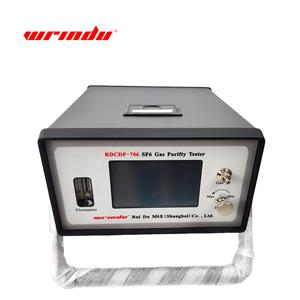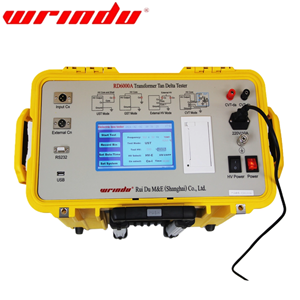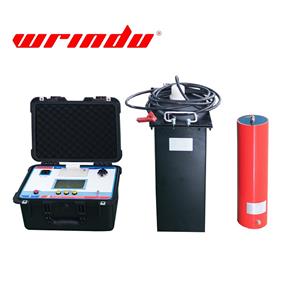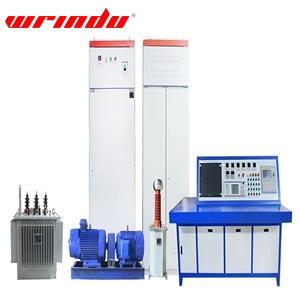You may ask about Equipment Grounding
Questions about Equipment Grounding
What does equipment grounding mean?
How grounding system testing works?
What is grounding impedance?
What are the regulation of grounding impedance value?
What are the regulation of large grounding devices?
What does equipment grounding mean?
In accordance with electrical codes, Equipment grounding refers to the practice of connecting the non-current-carrying metal parts of electrical equipment to the earth which can form a low-impedance path that allows fault current to return to the power source. This process tends to guarantee overcurrent protection devices (such as fuses or circuit breakers) operate properly in the event of a ground fault which can effectively prevent electric shock, equipment damage, and fire hazards. The purpose of equipment grounding include ensuring safety, protecting equipment, and maintaining system integrity. By directing fault current safely to the ground, grounding reduces the risks of electric shock, equipment failure, and fire.
How grounding system testing works?
OHM's Law
OHM's Law is a fundamental principle in electronics and electrical engineering that describes the relationship between voltage, current, and resistance. Whether you are a technician or an engineer, understanding OHM's Law is essential for calibrating, analyzing, and troubleshooting electrical circuits. The formula for OHM's Law is E = I × R, which means voltage equals current multiplied by resistance, or expressed as V = A × Ω.
Working Principle of Grounding Systems
The grounding system works by providing a low-resistance path for fault current or lightning-induced current to return to the ground, instead of allowing it to pass through high-resistance paths such as a person or direct contact. In a properly grounded system, equipment faults will return current through the equipment grounding conductor back to the breaker panel. If a fault occurs on the line side of the panel, the neutral conductor on the feeder and the grounding electrode provide a return path to the utility transformer. During thunderstorms, induced currents use all electrical connections to the common grounding point and grounding electrode to return to earth. Industry-standard test procedures exist specifically to distinguish between good and bad tests.
FAQs about grounding systems
Q: How far should I extend the test leads?
Sorry, there is no simple answer. It depends on variables at the test site and can only be determined effectively through trial and error. Some standard procedures (though not all) include built-in validation and follow standard tables that relate the size of the electrode under test (such as the diagonal length of a ground grid or the depth of a driven rod) to appropriate lead lengths.
Q: How deep should I insert the test probes?
Metal stakes in grounding tests function much like alligator clips in standard electrical testing—they establish the necessary connection to the earth. In general, it's unnecessary to drive the probes too deep into the ground. Unless the soil has particularly poor conductivity, simply pressing the probes in by hand is typically sufficient. Modern testing devices are capable of taking highly accurate readings with minimal current and voltage. Many advanced testers are also equipped with indicators to alert users if there's an issue with probe contact. Driving the probes too deep not only adds extra work but can also put unnecessary strain on your back and knees when it's time to remove them.
Q: Does the facility need to be powered down during testing?
No. There's no need to shut down the entire substation for testing! Modern testers use extremely low currents (just a few milliamps) and low voltage (under 50 volts), so they won't trip protection devices or damage any loads.
Q: My clamp-on ground resistance tester keeps reading "overrange" or "open." What's wrong?
This is probably not a mistake—the tester is likely detecting an open circuit, which is exactly what it’s designed to identify. For a clamp-on ground resistance tester to function properly, there needs to be a continuous path for the test current to flow through. If you're clamping onto an isolated ground, like a new rod that hasn't been connected to the utility system yet, the tester won't be able to measure correctly. Clamp-on testers depend on having a return path through a connected system to make accurate measurements.
What is grounding impedance?
Ground impedance refers to the resistance that ground current encounters during AC transmission, which can negatively impact power transfer efficiency and cause telephonic interference. For DC currents, this impedance is negligible, enabling monopolar operation. However, it becomes problematic when dealing with buried metallic structures, as it can lead to potential corrosion.
What are the regulation of grounding impedance value?
Measurement regulation of grounding impedance value
Ground impedance measurements should be conducted with a comprehensive field test after the expansion of the grounding system and its connection to the original grounding network.
The ground impedance value should comply with the specifications outlined in the following design table.
| Grounding grid type |
Requirement |
| Effective grounding system |
When Z ≤ 2000/I or when I > 4000A, Z ≤ 0.5Ω WI = short-circuit current flowing into the ground through the grounding device (A); Z = maximum grounding impedance (Ω) taking into account seasonal variations. If the grounding impedance does not meet the above requirements, it may be increased based on technical and economic comparisons, but must not exceed 5Ω. A comprehensive analysis of the grounding device and the implementation of isolation measures should also be conducted in conjunction with ground potential measurements. |
| Ineffective grounding system |
When the grounding grid shares a common ground with equipment of 1 kV or lower, the grounding impedance Z must be ≤ 120/I.
When the grounding grid is used only for equipment above 1 kV, the grounding impedance Z must be ≤ 250/I. In both cases, the grounding impedance must not exceed 10 Ω. |
| Power equipment below 1kV | For all such electrical equipment using the same grounding device, when the total capacity is ≥100kVA, the grounding impedance should not be greater than 4Ω. When the total capacity is <100kVA, the grounding impedance can be greater than 4Ω, but should not be greater than 10Ω. |
| Independent lightning rod |
It should not be greater than 10Ω. When connected to the grounding grid, it is not necessary to measure separately. |
| The suction fan near the chimney of the power plant and the centralized grounding device installed there |
It should not be greater than 10Ω. When connected to the grounding grid, it is not necessary to measure separately. |
| Centralized grounding device and independent lightning rod in open air | It should not be greater than 10Ω. |
| Line towers with overhead ground wires |
1. When the tower height is less than 40m, the following requirements must be met: 1) When the soil resistivity is ≤500Ω·m, the grounding impedance should not exceed 10Ω; 2) When the soil resistivity is between 500Ω·m and 1000Ω·m, the grounding impedance should not exceed 20Ω; 3) When the soil resistivity is between 1000Ω·m and 2000Ω·m, the grounding impedance should not exceed 25Ω; 4) When the soil resistivity is greater than 2000Ω·m, the grounding impedance should not exceed 30Ω. 2. When the tower height is ≥40m, 50% of the above values shall be used. However, when the soil resistivity is greater than 2000Ω·m and the grounding impedance cannot meet the requirement of no more than 15Ω, a value of no more than 20Ω may be used. |
| Lightning arrester on the incoming line section of rotating motor directly connected to overhead lines | It should not be greater than 3Ω. |
| Line towers without overhead ground wires |
For reinforced concrete poles and metal poles in non-effectively grounded systems, the resistance should not exceed 30Ω. For reinforced concrete poles and metal poles in low-voltage power lines with ungrounded neutral points, the resistance should not exceed 50Ω. For the iron legs of low-voltage service line insulators, the resistance should not exceed 30Ω. |
What are the regulation of large grounding devices?
The measurement of the surface potential gradient, contact potential difference, step voltage, and transfer potential in the field area should comply with the following regulations:
For large grounding systems, the surface potential gradient, contact potential difference, step voltage, and transfer potential should be measured. The test method may be based on the relevant provisions of the current industry standard "Guidelines for Measurement of Characteristic Parameters of Grounding Systems" (DL475). The influence of overhead ground wires and cables connected to the grounding grid should be excluded during the test.
When the grounding impedance of the grounding grid does not meet the requirements, the surface potential gradient, contact potential difference, step voltage, and transfer potential in the field area should be measured and a comprehensive analysis should be conducted.
If you are interested in Grounding and Insulation Tester, click here to find more information.




